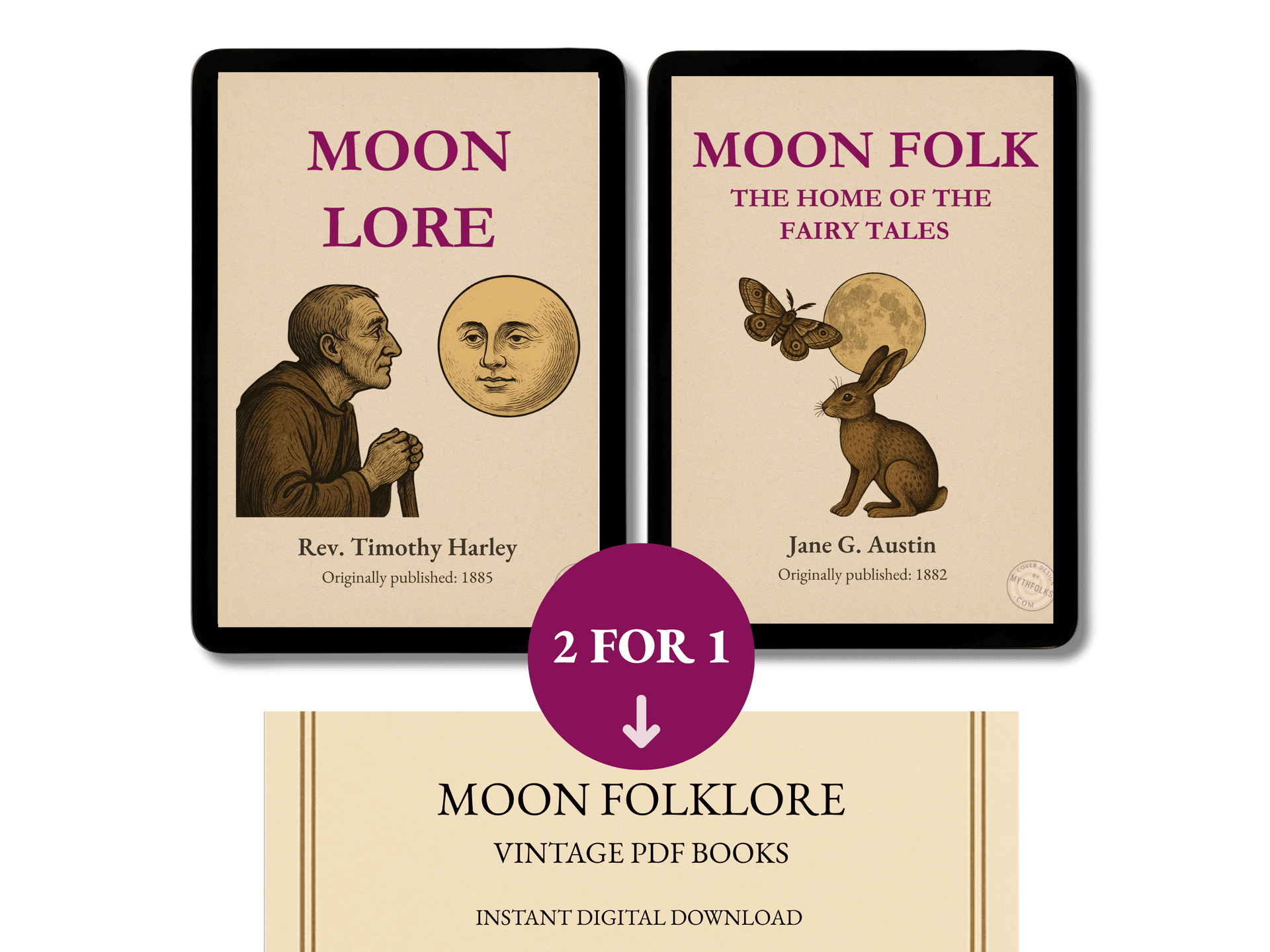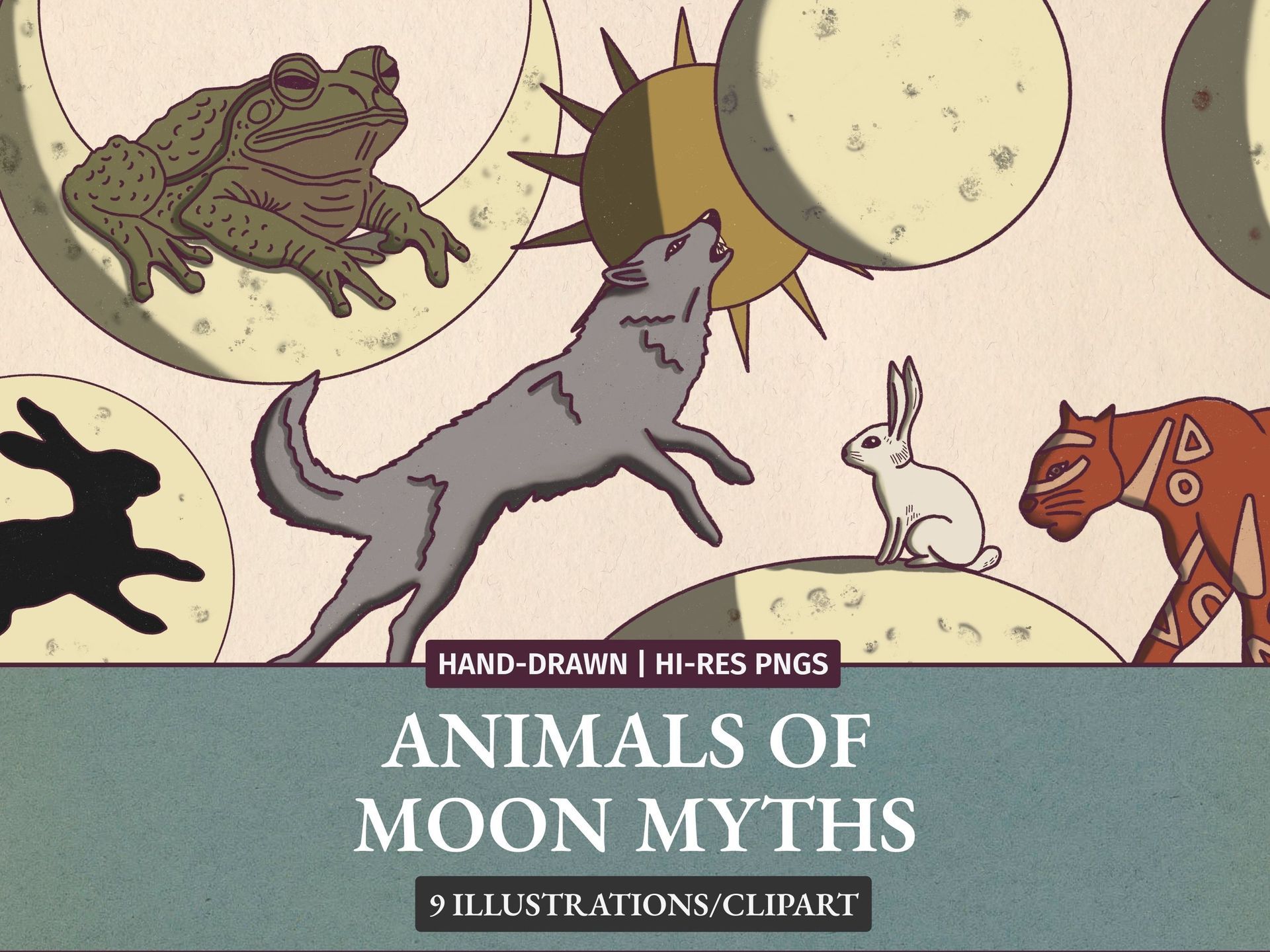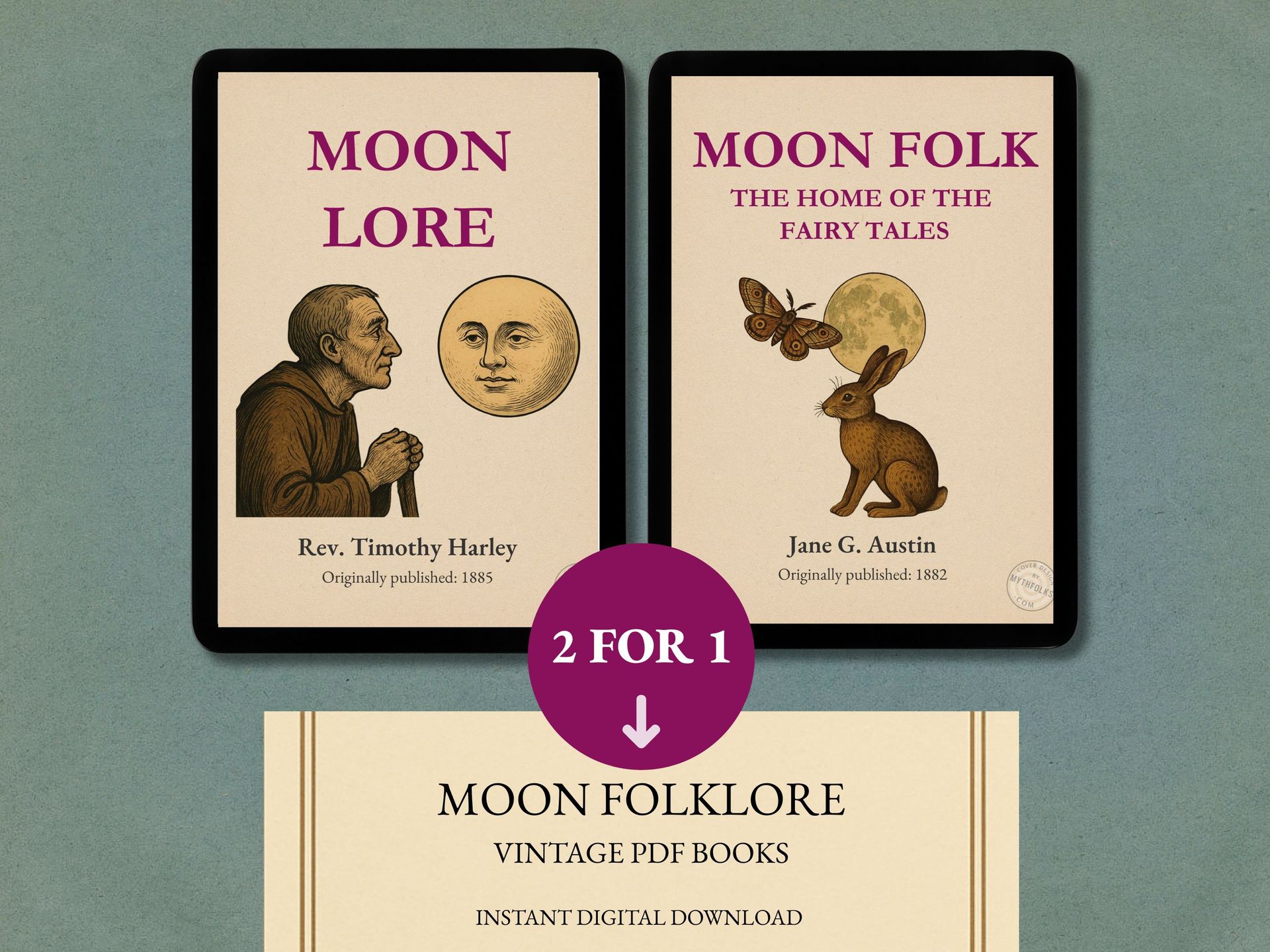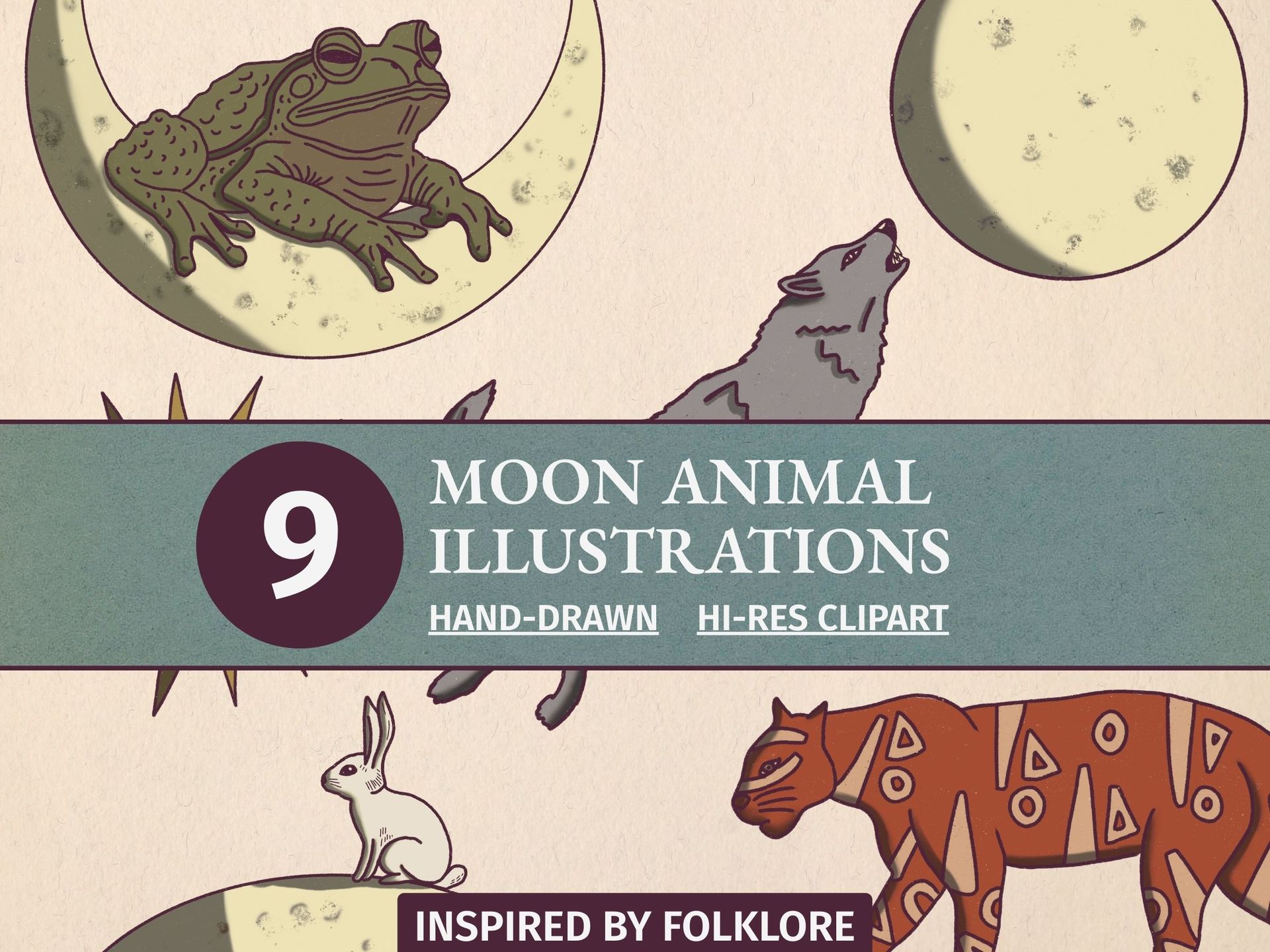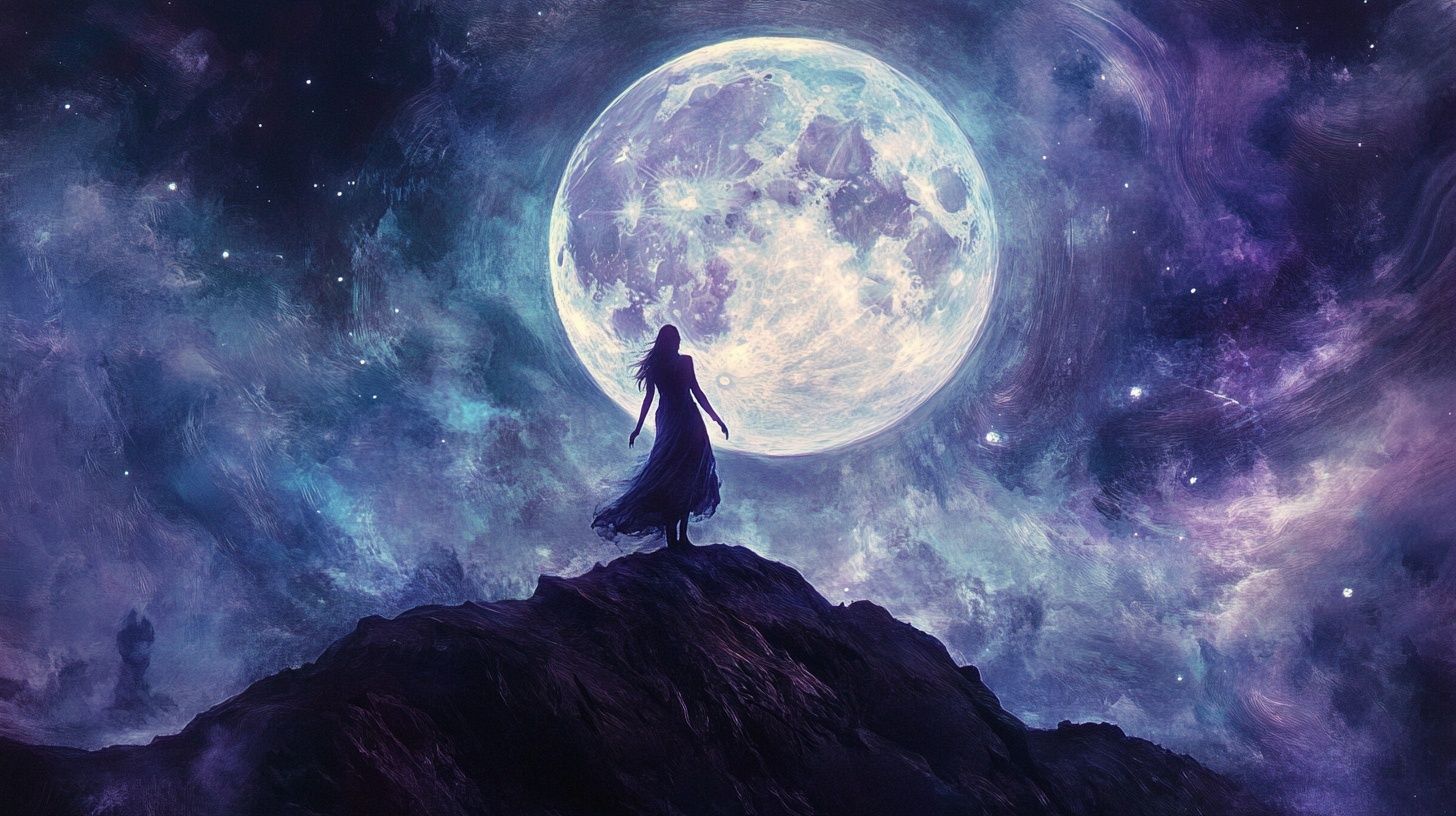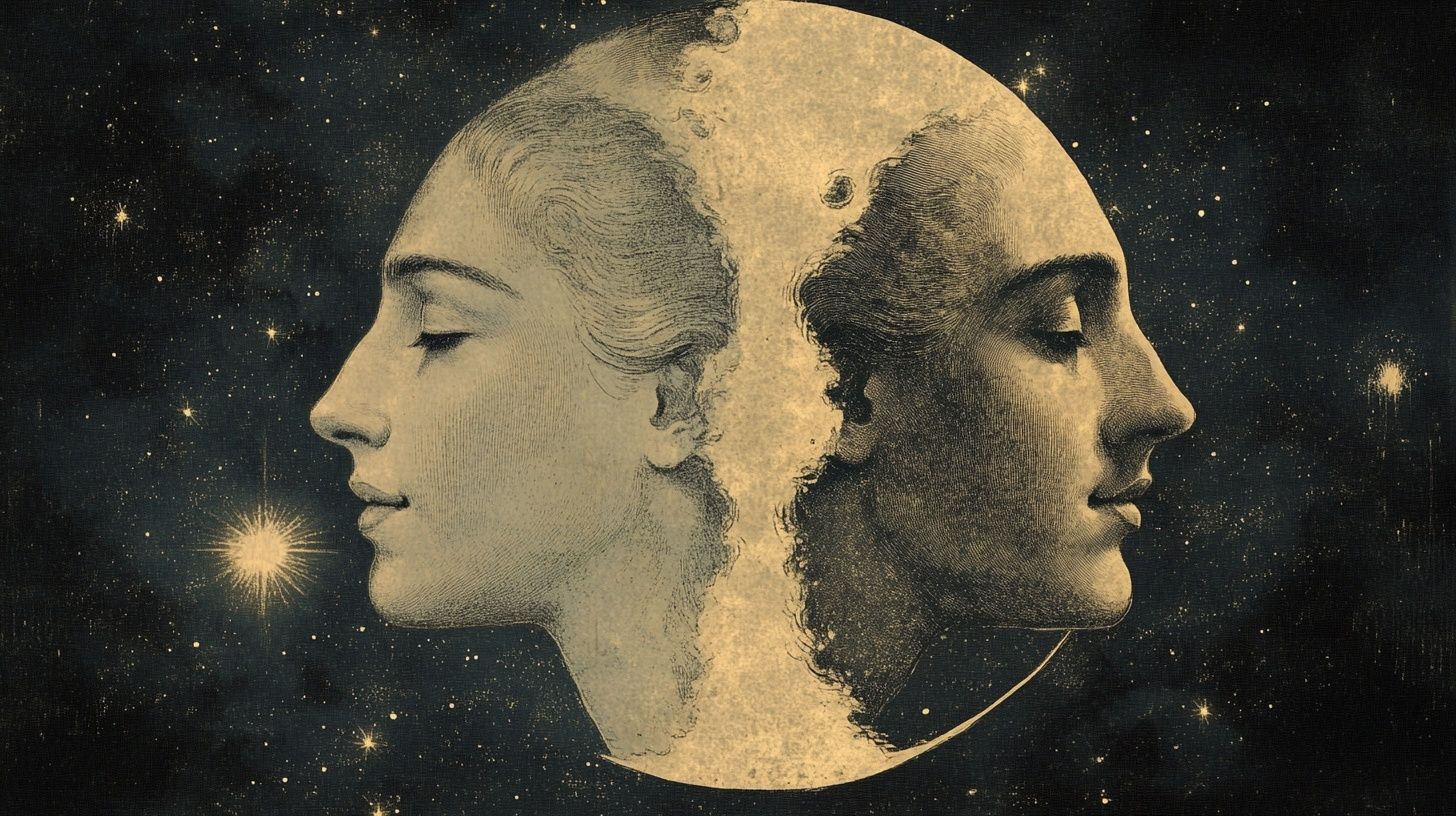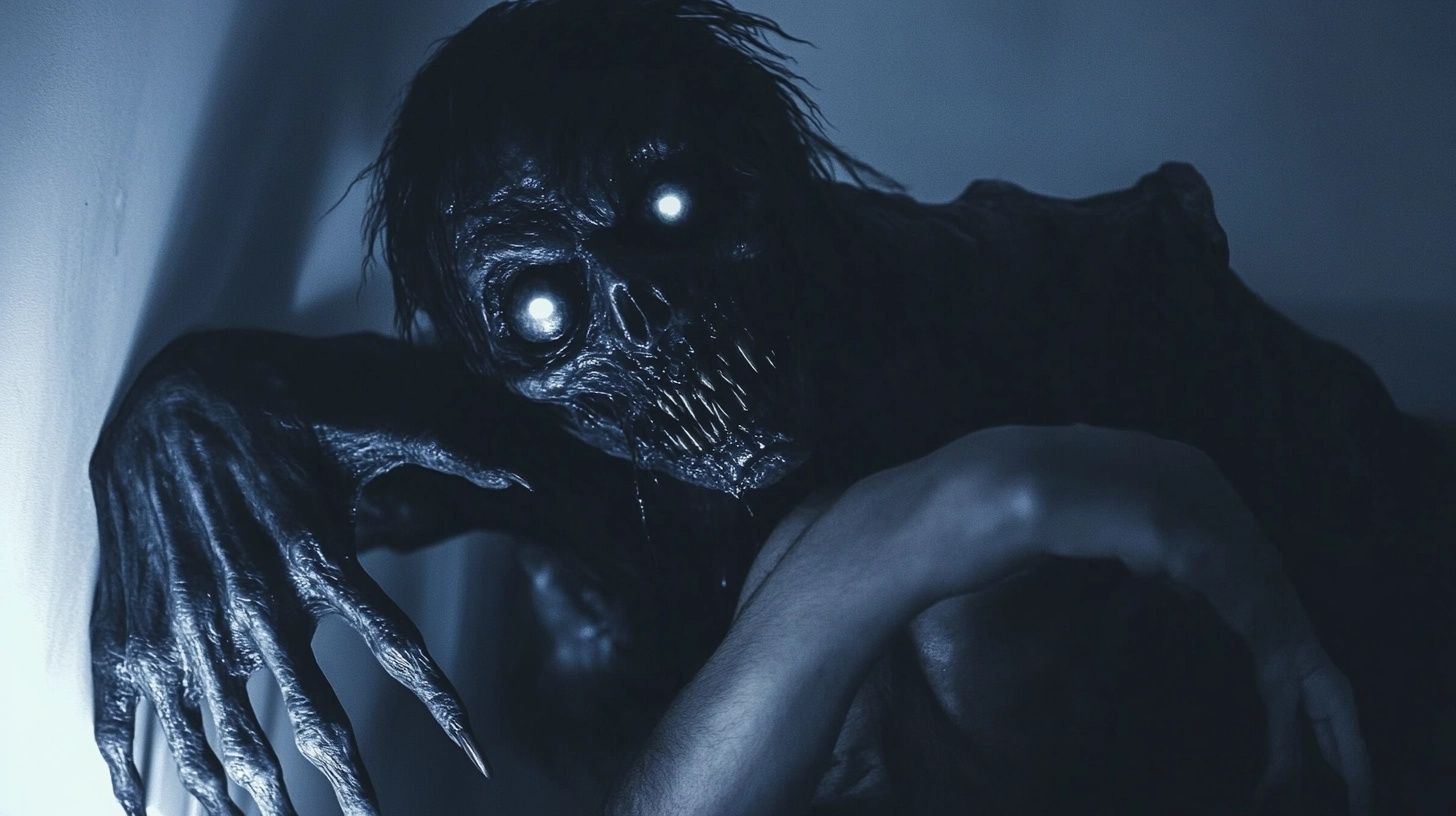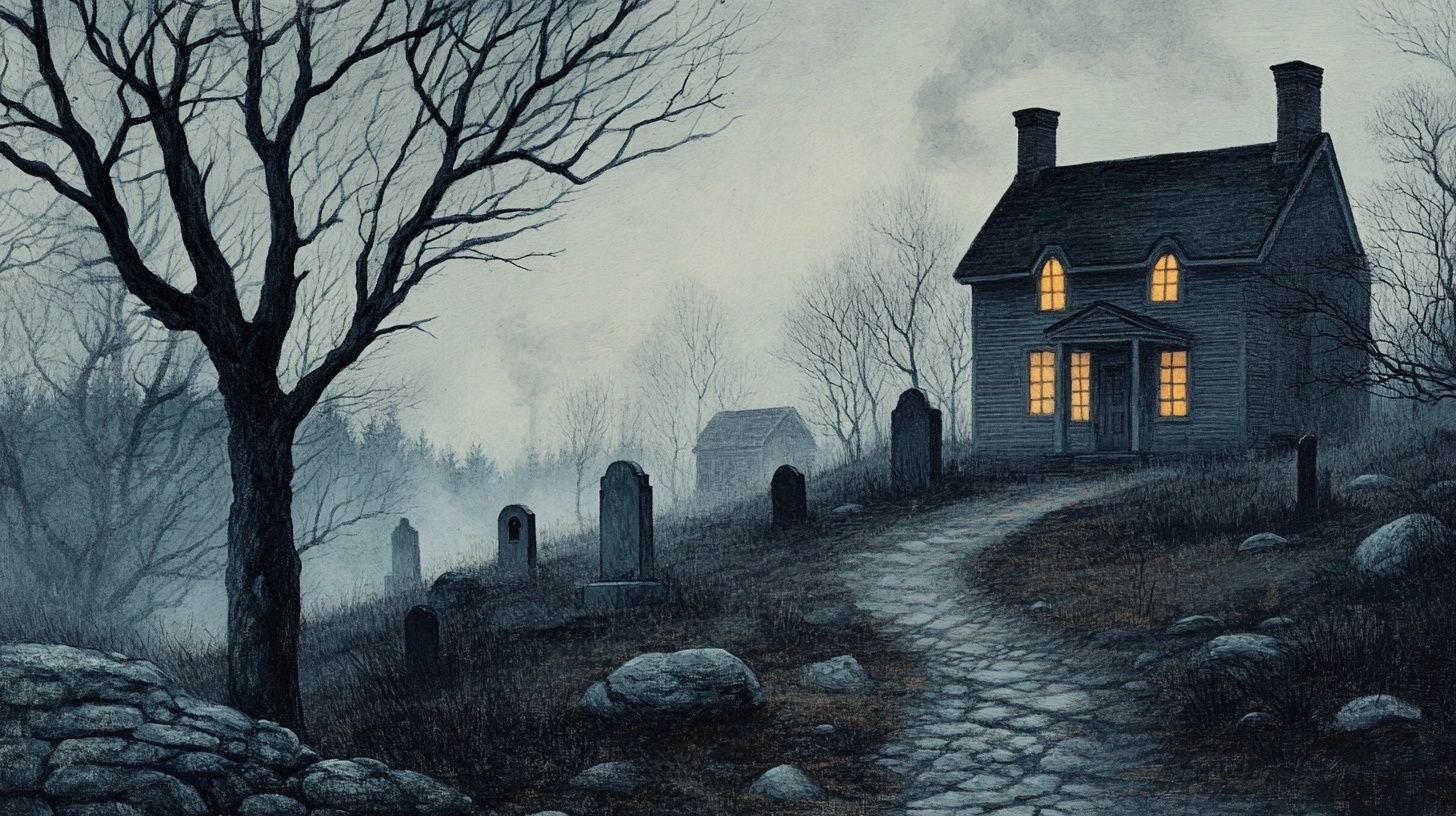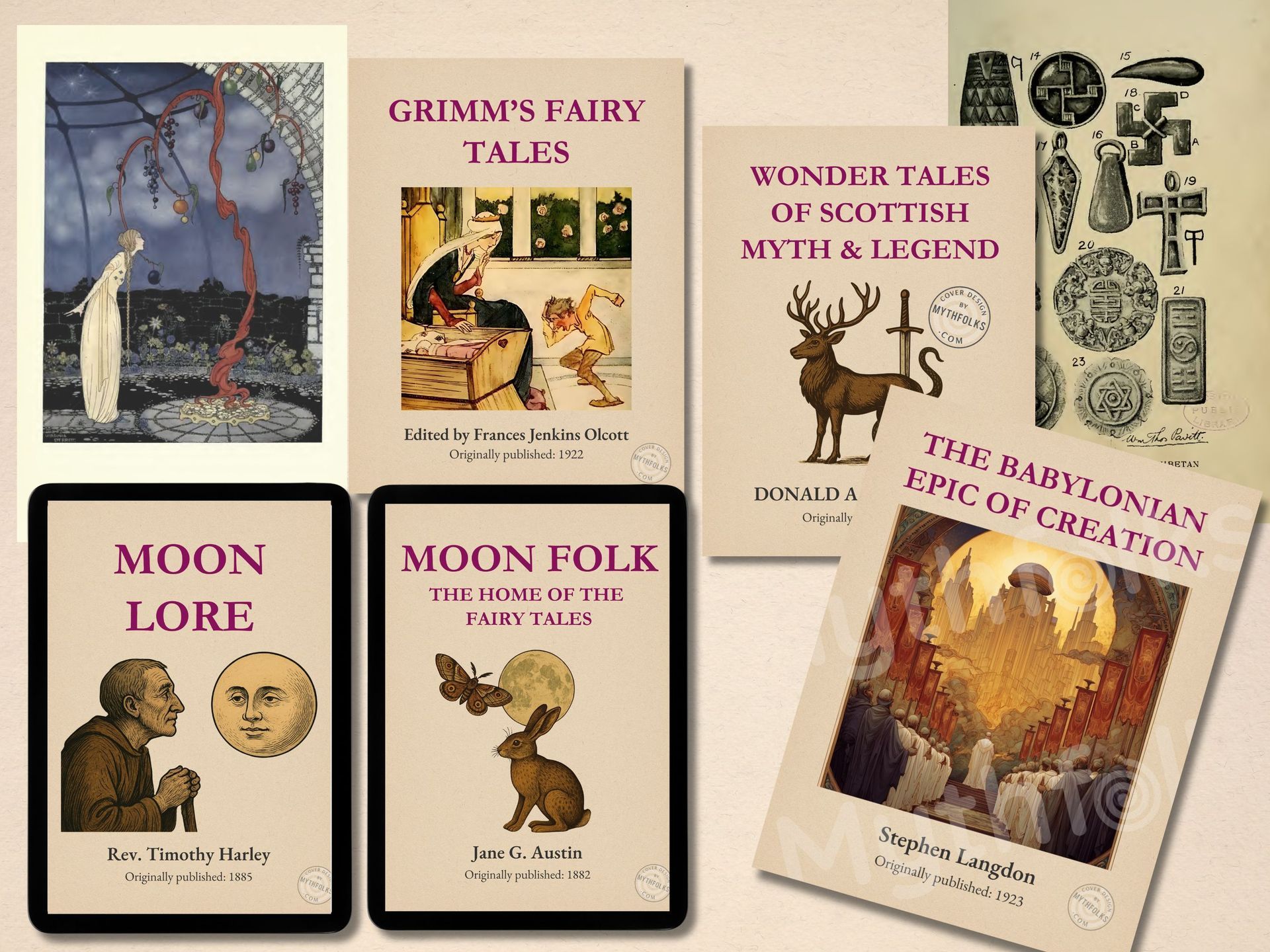Moon folklore & mythology: legends, superstitions and mystical beliefs across cultures
For centuries, people around the world have looked up at the moon and seen more than just a glowing rock in the sky.
From the Man in the Moon to blood moon omens and Japanese moon deities to Scandinavian lunar legends.
These are some of the best lunar myths, superstitions and beliefs that I dug out of some obscure late 19th century texts
(if you want to dive deeper you can check out the originals in my Etsy shop here).
Updated: 30th Aug 2025
Author: Sian H.
The moon as a deity in global mythology
The moon was at the centre of many ancient magical practices and was often worshipped as a divine being in many cultures. Some saw it as a powerful god, others as a nurturing goddess.
In many traditions, the moon was linked to time, fertility and the natural rhythms of life (and this is still a relatively popular belief system in many parts).
The moon as a god or goddess
In ancient Greece/Rome, the moon was personified as Selene/Luna respectively, a goddess who drove her silver chariot across the night sky (also see the Woman in the Moon below). Over time, Selene’s lunar role was partially merged with Artemis (Diana), the huntress and protector of women.
Artemis became associated with the moon, but she was originally a goddess of the hunt, later linked to childbirth and protection rather than fertility itself.
In Japanese mythology, the moon god Tsukuyomi was one of the three deities born from the creator god Izanagi. Unlike the sun goddess Amaterasu, who was warm and nurturing, Tsukuyomi was cold and distant.
After killing the goddess of food, Uke Mochi, he was shunned by Amaterasu, (which explained why the sun and moon are never seen together) and in later myths, he became a more shadowy figure.
In Hinduism, the moon god Chandra rides a chariot pulled by ten white horses. His waxing and waning are the result of a curse from Daksha, punishing him for favoring one of his 27 wives over the others. Chandra is central in Hindu astrology, where the moon’s position at birth is believed to shape a person’s emotions and destiny.
The Norse believed the moon was male, called Máni, pursued by the wolf Hati. One day, it was said, the wolf would catch the moon, marking the arrival of Ragnarok, the end of the world.

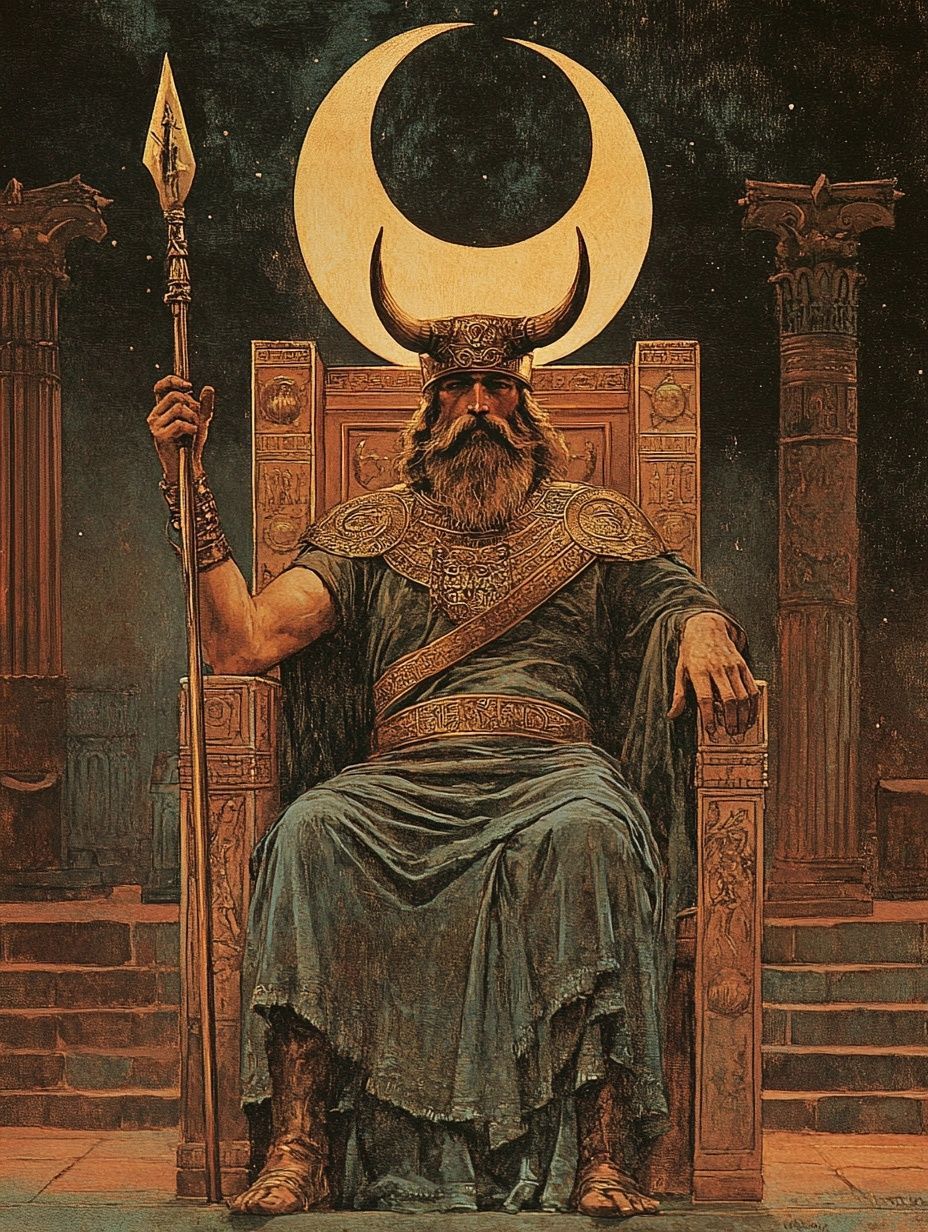
The moon and water: tides, emotions and fertility
Many ancient cultures linked the moon to water, as they observed its influence over the tides. Some also associated it with fertility, noting that its cycle was similar to that of menstruation.
The later ancient Mesopotamian cultures including the Babylonians saw the moon god Sin as the ruler of time and cycles. His movements were used to track months and seasons, guiding farmers on when to plant and harvest.
In China, the moon was associated with yin, the passive, feminine force in nature. It represented intuition, emotion, and the hidden aspects of life. The Chinese Mid-Autumn Festival celebrates the moon’s role in bringing harmony and renewal.
In some African traditions, the moon was believed to influence rainfall and agriculture. The Zulu tracked moon cycles for farming, while the Khoisan linked the moon to seasonal rains. Some West African cultures associated the moon with water spirits, seeing it as both a blessing and a force of destruction.
Even today, many believe the moon affects moods and behavior, though scientific support remains inconclusive. The idea that full moons influence mental health has existed since ancient times and continues in astrology, but historical records don’t show a universal belief across all cultures.
The Man in the Moon and other lunar figures
Many cultures see figures in the moon’s markings. Some say they are people who were punished and sent there. Others believe they are gods or animals with special powers.
The Man in the Moon
One of the most common stories is about a man carrying sticks on his back. In England and Germany, folklore says he was punished for gathering wood on the Sabbath and sent to the moon as a warning to others.
Some connect this tale to a biblical story about a man stoned for breaking the Sabbath (Numbers 15:32-36), though the Bible itself doesn’t mention the moon.
A medieval rhyme refers to him:
"The man in the moon,
With his bundle of thorn,
Stuck fast in his place,
For breaking the morn."
Scandinavian mythology tells a different version. The moon god took two children, Hjuki and Bil, who were fetching water at night and their figures were said to be visible on the moon’s surface. Some speculate this story may have influenced Jack and Jill, but there is no direct historical link.
The Woman in the Moon
Some cultures see a moon woman instead of a man.
The Greek goddess Selene fell in love with a shepherd named Endymion. In some versions, Zeus granted him eternal sleep, while in others, Selene cast the spell herself to keep him forever young. She visited him every night as he lay in an endless slumber.
In Māori legend, Rona was carrying a bucket of water at night when she stumbled and cursed the moon for its dim light. In response, the moon seized her and pulled her into the sky. Some say her figure can still be seen on the moon’s surface, holding her water vessel.
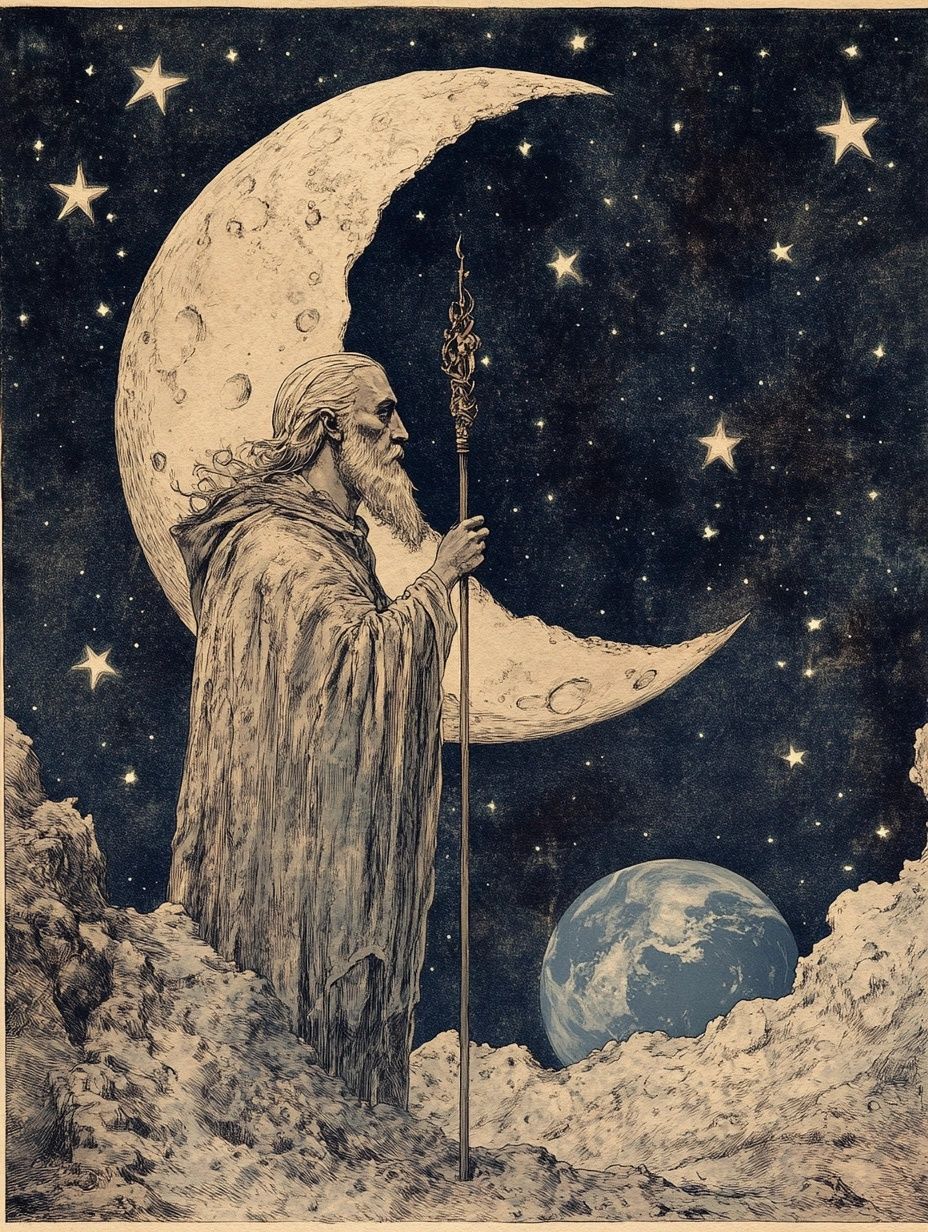
Enjoying this article? Check out my vintage Moon folklore ebook bundle and get
2 for the price of 1!
(Clicking the link will open the Mythfolks Etsy shop in a new tab.)
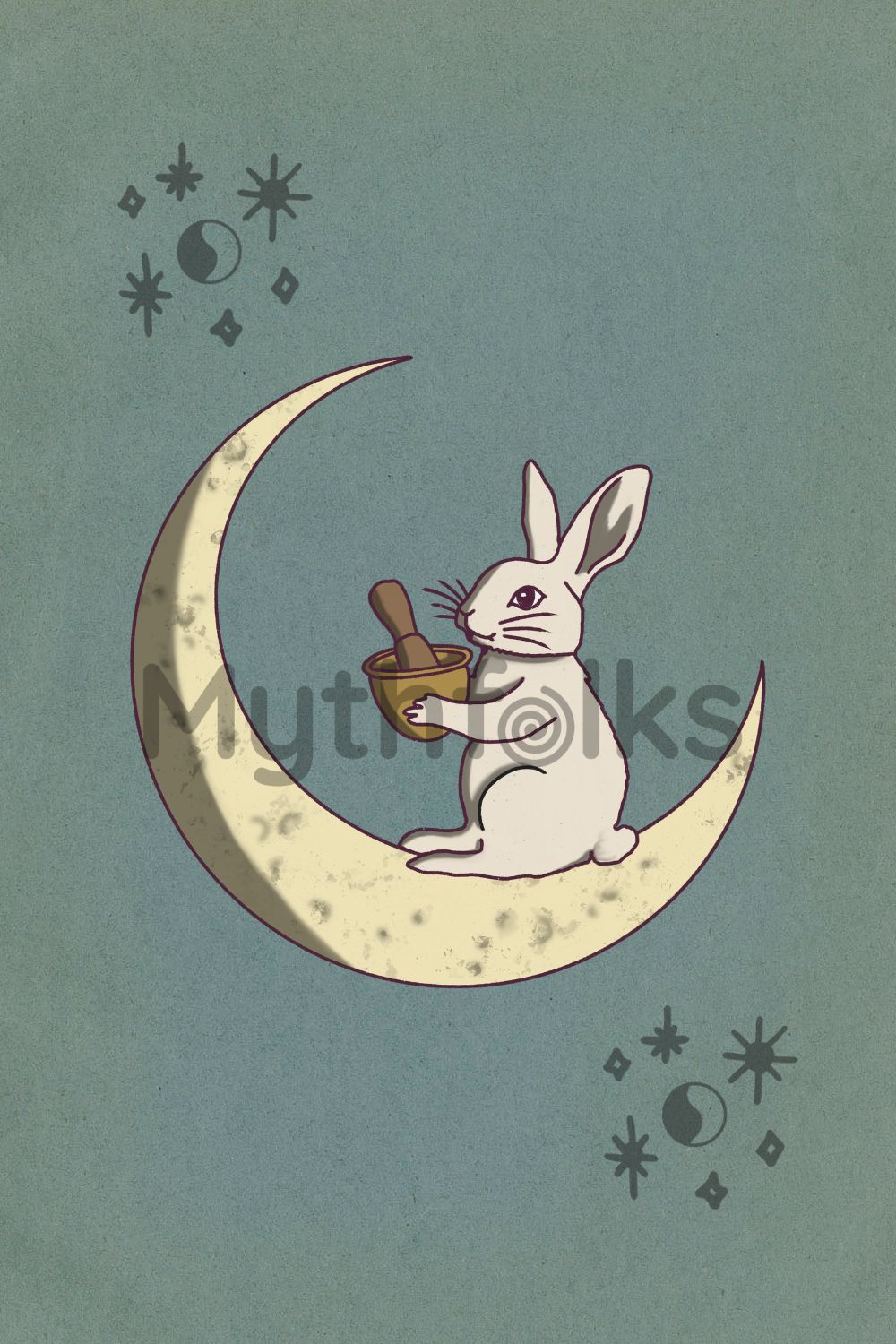
The rabbit and the toad in the moon
Many Asian cultures see a hare instead of a man in the moon.
In Buddhist tradition, a rabbit, fox, and monkey met a starving man, who was actually a disguised god.
While the others found food, the rabbit, having nothing to offer, jumped into a fire as a sacrifice. Moved by its kindness, the god placed the rabbit in the moon.
In Chinese folklore, the Jade Rabbit is a companion to the moon goddess Chang’e. After Chang’e drank the elixir of immortality and floated to the moon, she was left alone and the Jade Rabbit became her only companion. The rabbit is often depicted grinding herbs in a mortar, symbolizing the preparation of the elixir of immortality.
Some Chinese myths describe Chang’e transforming into a toad after reaching the moon, either as punishment or as part of her divine nature. In Daoist alchemy, the toad is linked to immortality and transformation, reinforcing this version of the legend.
In Aztec mythology, when the gods created the sun and moon, Tecuciztecatl, the moon god, hesitated before sacrificing himself. As punishment, the gods dimmed his brightness by striking the moon with a rabbit, leaving its mark. This is why some people claim to see the outline of a rabbit on the moon’s surface.
Other Figures in the Moon
- Among the Inca, the moon was worshipped as the goddess Mama Quilla, wife of the sun god Inti. She was especially revered by women, who prayed to her for protection in marriage and childbirth.
- The San people of Southern Africa told stories of the moon angering the sun, who cut it down in size, explaining its phases. Some versions say the moon is reborn after each cycle.
Some myths describe the moon as a prison, like the Man in the Moon stories, where people are banished as punishment.
Others see it as a refuge, like in Māori and Chinese myths, where figures escape to the moon and remain there forever.
Moon superstitions and beliefs
Superstitions about the moon are well documented and there are many that believe it has some influence on human behavior, fate and the natural world.
Full Moon: madness and transformation
The full moon has long been linked to erratic behavior. The word lunatic comes from the Latin luna (moon), reflecting the old belief that the moon could cause madness. Some traditions claimed it disturbed sleep or increased violence.
While some still believe crime rates and hospital admissions rise during a full moon, the evidence for that isn’t conclusive.
Stories of transformation are also tied to the full moon. Famous werewolf legends say a person bitten by a wolf transforms under a full moon, though earlier werewolf myths did not always include this detail (like the Wulver in Scottish folklore).
In European witch folklore, witches were believed to gather and cast spells when the moon was full, as its light was thought to enhance magical power.
Lunar eclipses: omens and warnings
A lunar eclipse was often seen as a bad omen - understandably, having witnessed a full eclipse myself, I can only imagine what our ancestors thought before we came to better understand our universe scientifically!
The Inca thought a jaguar was attacking the moon, so they shouted and banged drums to scare it away. The Chinese imagined a dragon swallowing the moon and made loud noises to drive it off.
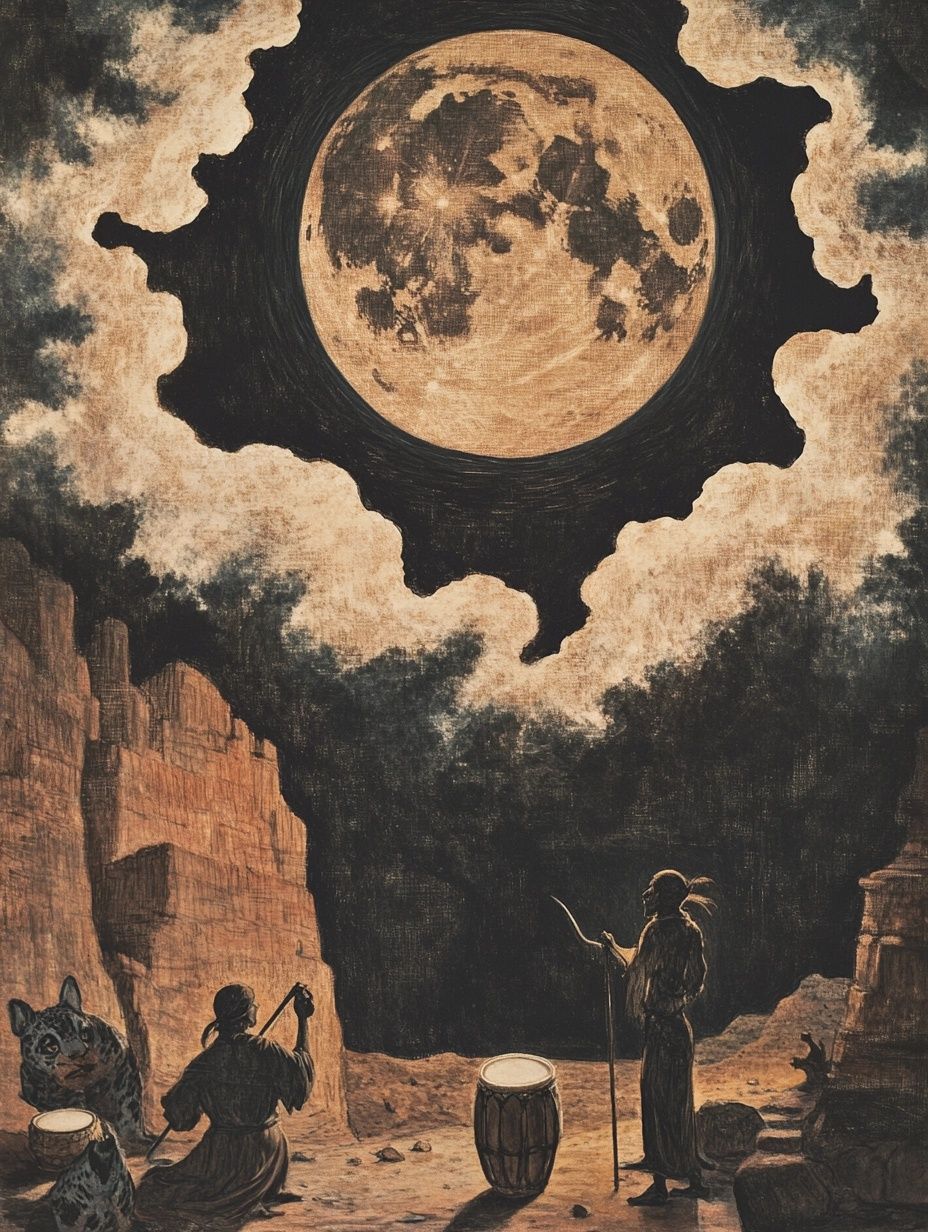
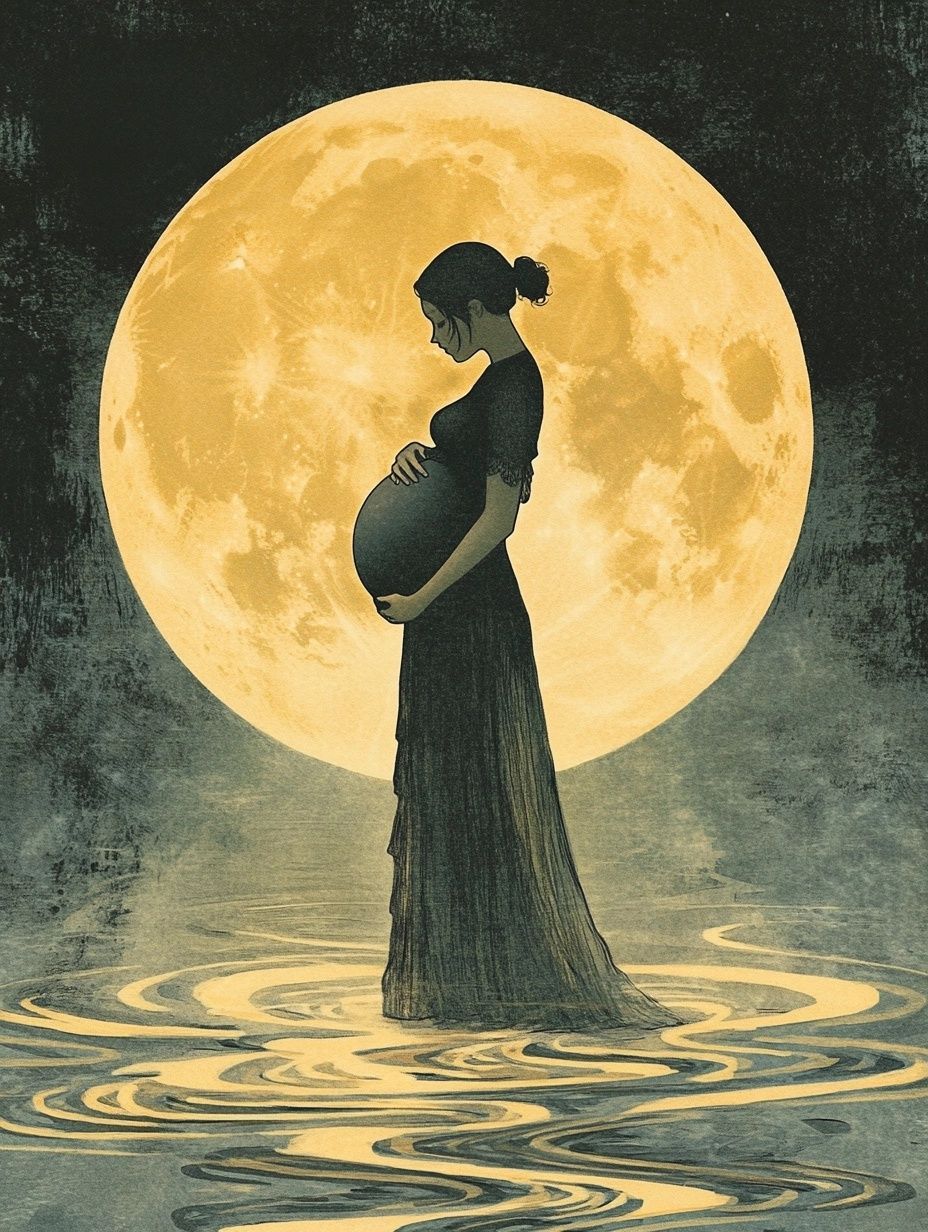
In Mayan mythology, a celestial serpent or jaguar was believed to attack the moon during an eclipse, similar to Inca and Chinese beliefs.
Despite their advanced knowledge of astronomy, the Maya still feared eclipses as bad omens, performing rituals to protect the moon, including loud noises and bloodletting ceremonies (do see the movie Apocalypto if you haven't already!).
These events were especially significant because the moon was linked to Ix Chel, the goddess of fertility and childbirth, and eclipses were believed to threaten pregnancy and disrupt the natural cycles she governed.
In Hindu mythology, the demon Rahu was believed to devour the moon as revenge for being beheaded by the god Vishnu. Since Rahu was immortal but bodiless, the moon would reappear after passing through his severed head, explaining the temporary nature of an eclipse.
The moon’s influence on life
People have long believed the moon affects nature and human affairs. Farmers used lunar calendars to plan planting and harvesting, though not all traditions followed moon phases strictly.
Some believed cutting hair or nails during a waxing moon would make them grow faster, while a waning moon would slow growth.
Pregnancy and childbirth have also been connected to the moon, but there’s no evidence to support claims that more babies are born during a full moon.
Others believed sleeping with moonlight on the face could cause insanity or bad dreams, while making a wish on a new moon was seen as a sign of good luck.
Special moons in folklore
Different types of full moons have taken on special meanings in folklore. Whether due to their color, timing, or rarity, they have been linked to omens, rituals, and beliefs across cultures.
Blue moon: a moon of mystery
The phrase “once in a blue moon” refers to something rare, but a blue moon isn’t actually blue. It’s the second full moon in a single calendar month or, in older traditions, the third full moon in a season with four full moons.
In folklore, blue moons were seen as unpredictable and disruptive. Some believed they brought bad luck, while others saw them as a time when magic was stronger.
In some European traditions, a blue moon was a time for breaking curses or casting powerful spells. Farmers sometimes used it to determine planting cycles, as an extra moon in a season could affect growing patterns.
Blood moon: sign of doom
A blood moon occurs during a total lunar eclipse when the Earth’s shadow turns the moon a deep red. Many cultures saw this as a bad omen.
In Norse mythology, a blood moon was linked to the wolves Skoll and Hati, who chased the sun and moon across the sky. When the moon turned red, it meant one of the wolves had caught it, signaling chaos and the coming of Ragnarok.
Ancient Babylonians meticulously recorded lunar eclipses on clay tablets using cuneiform script, interpreting them as warnings of disaster.
They believed a blood moon could foretell the death of a king, and to protect the ruler, they would install a temporary “substitute king”, who would later be sacrificed to absorb the bad omen.
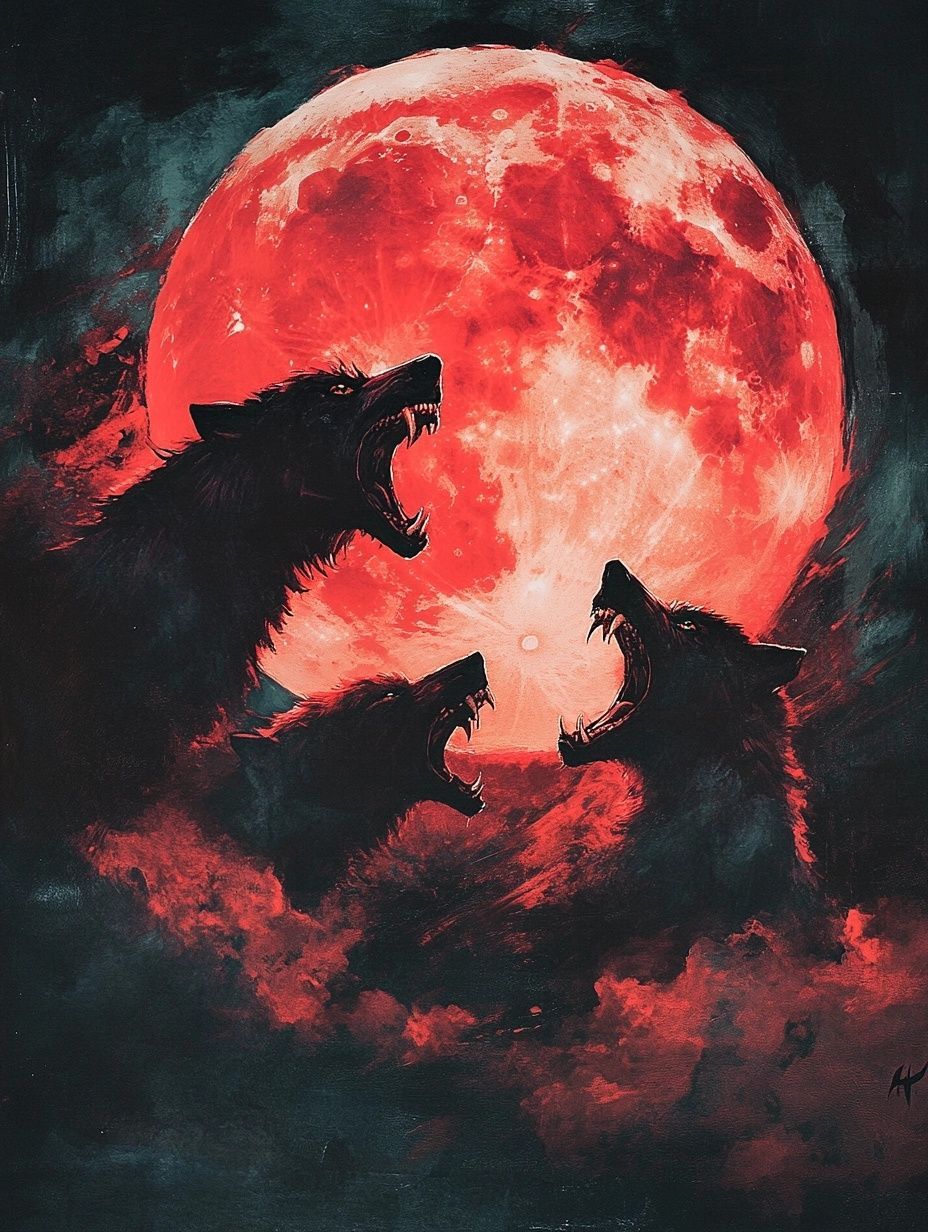
Creating something different?
Shop my original, hand-drawn animal illustrations, inspired by global moon mythology!
(Clicking the button will open the Mythfolks Etsy shop in a new tab.)
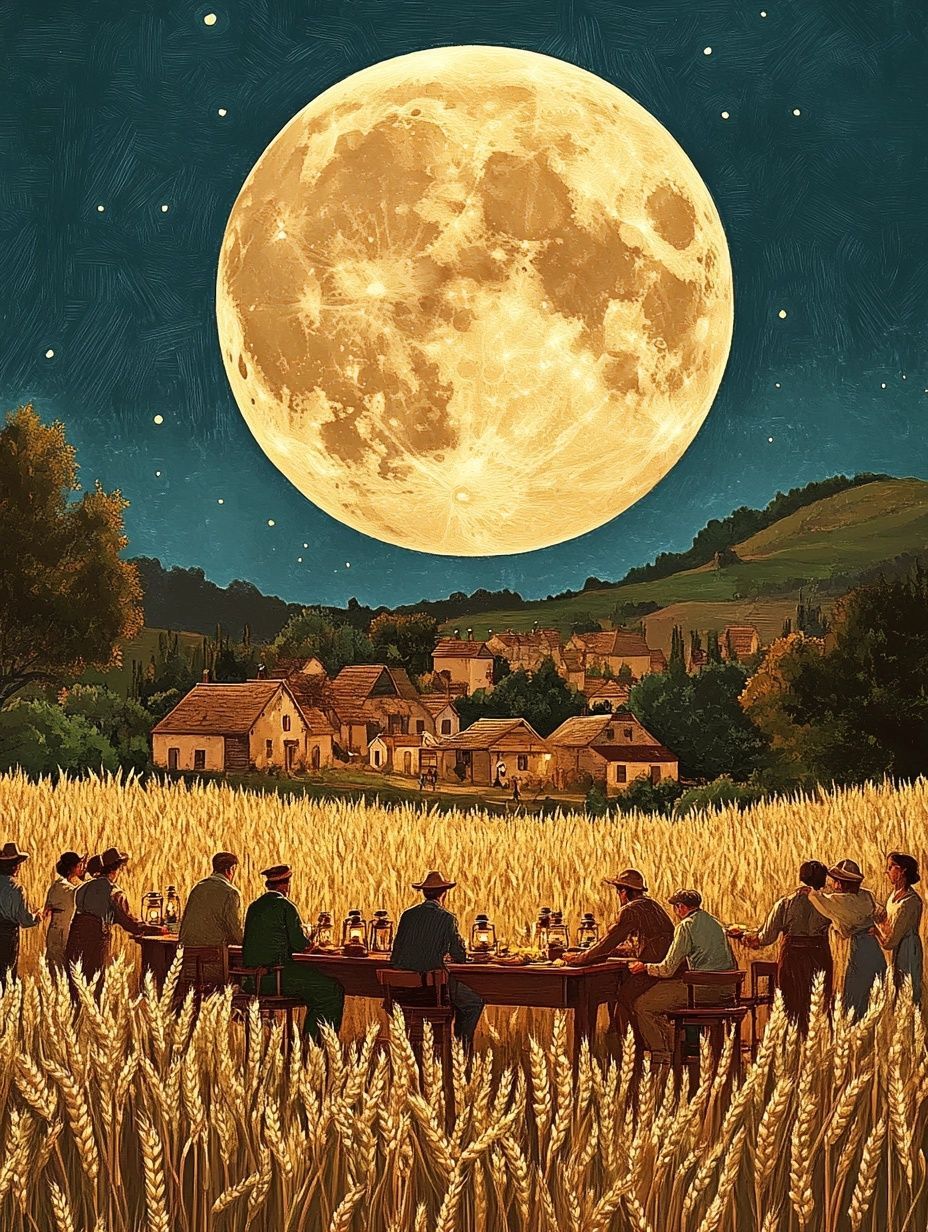
The Hausa people of West Africa believed a blood moon was caused by the moon being wounded. During an eclipse, they performed rituals to heal it, symbolically treating it like an injured celestial being.
Blood moons have also been linked to apocalyptic warnings in Christian theology. The Book of Joel 2:31 states: "The sun shall be turned into darkness, and the moon into blood, before the great and terrible day of the Lord come."
Some interpret blood moons as warnings of significant events, particularly when they coincide with religious holidays.
Harvest moon: a time of abundance
The harvest moon is the full moon closest to the autumn equinox. Because it rises early and provides extra light in the evening, it was an important aid to farmers gathering their crops before winter.
Many cultures viewed the harvest moon as a time of gratitude and celebration.
The Chinese Mid-Autumn Festival, one of the most famous moon festivals, takes place during this time. Families gather to give thanks and enjoy mooncakes. In Europe, harvest festivals were held under this moon, often with feasts and ceremonies honoring deities of agriculture.
In Native American traditions, the harvest moon was part of a cycle of named moons that marked the seasons. Some tribes saw it as a sign that the spirits of the land were watching over them, ensuring a good harvest.
Other Named Moons in Folklore
Different cultures have given names to the moons of each month, each with its own meaning. Some of the most common include:
- La Lune Rousse or the Rust Moon - is named in French agricultural folklore for the period of the year where it was believed the moon killed crops
- Wolf Moon (January) – named by Native Americans and Europeans, it represents the howling of hungry wolves in midwinter.
- Strawberry Moon (June) – signaled the time for gathering ripened strawberries in North America.
- Hunter’s Moon (October) – the first full moon after the harvest, associated with hunting to prepare for winter.
Every moon carries its own legends. Whether feared or celebrated, these special moons have shaped rituals, traditions and beliefs for centuries.
Can the moon be inhabited? Early speculations and myths
Long before space exploration, people speculated about life on the moon. Some believed it was a paradise, others thought it was a place of punishment. Writers, philosophers and astronomers imagined lunar civilizations, shaping both folklore and early science fiction.
The moon as a realm of spirits
Some ancient Persian beliefs described the moon as a place where souls stopped on their journey after death.
It was seen as a realm of purification, where spirits passed through before moving to a higher plane, such as the sun or stars. However, it was not a final resting place, but rather a stage in the soul’s journey.
This shares some similarities with Greenlandic Inuit folklore, where the soul would pass by the moon on its way to the “upper world”, a land of warmth and joy.
The journey to the upper world was fraught with danger though and the path to the moon was said to be protected by an evil creature that delighted in stopping them (by quite horrible means).
The moon as another world
The Greek philosopher Anaxagoras (5th century BCE) proposed that the moon was a rocky body with mountains and valleys, challenging earlier beliefs that it was a divine entity.
Lucian of Samosata’s A True Story (2nd century CE) describes a journey to the moon and its strange civilization. Though written as a satire of Greek historians, it’s also one of the earliest examples of speculative fiction.
In the 17th century, writers expanded on these ideas. Francis Godwin’s The Man in the Moone (1638) imagined a voyage to the moon via geese, while Johannes Kepler’s Somnium described lunar creatures adapted to harsh conditions.

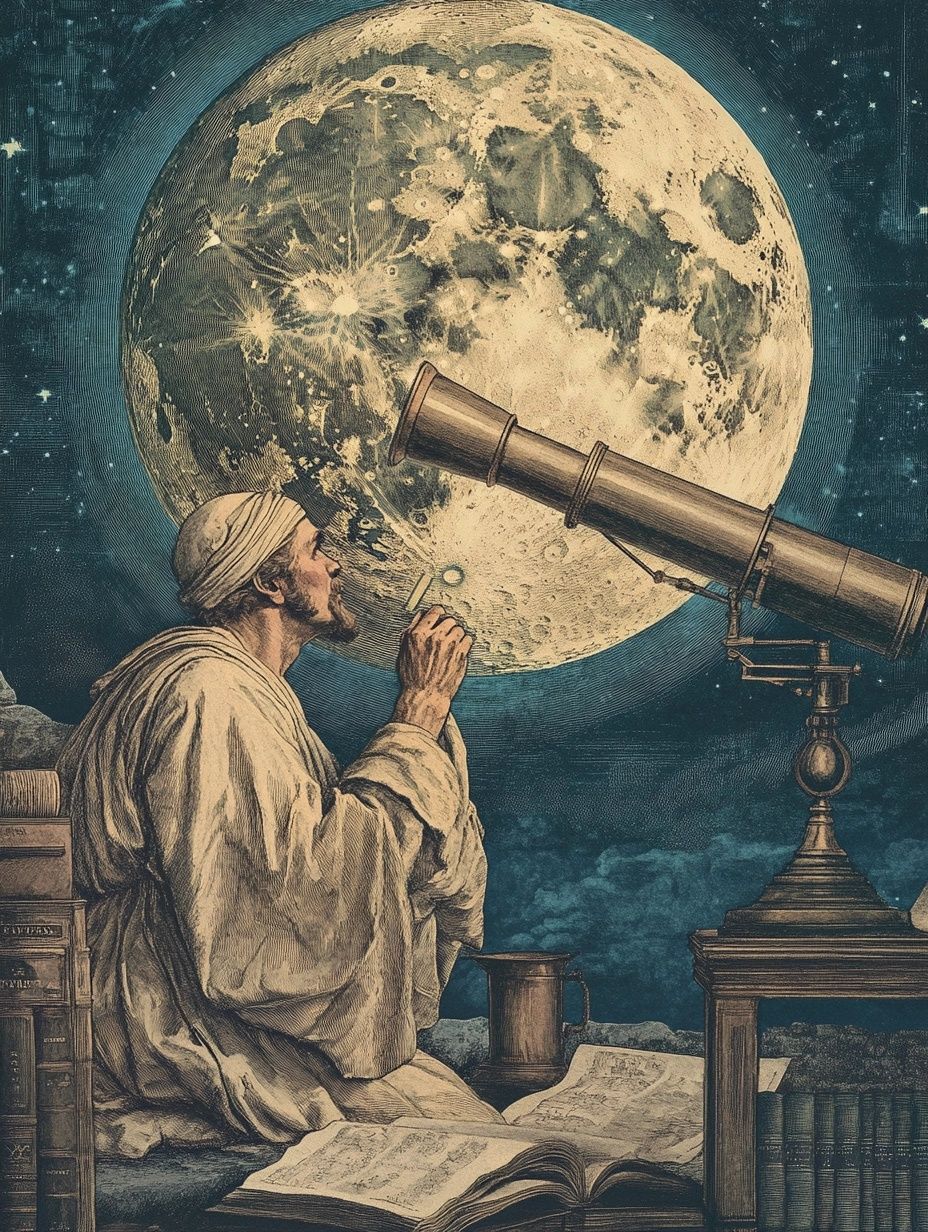
The moon hoax and modern myths
In 1835, the New York Sun published a series of articles claiming that astronomer Sir John Herschel had discovered life on the moon, including winged humanoids and bison.
The so-called 'Great Moon Hoax' fooled many readers before being exposed as satire. Herschel himself was unaware of the hoax and had no involvement in it.
In the 20th century, in one of the most famous “conspiracy” theories, it was claimed by some that the Apollo moon landings were faked. Despite evidence to the contrary, some still argue that NASA staged the footage. Others suggest that NASA found alien structures and covered them up.
Personally I think that the media have only themselves to blame for perpetrating a hoax in the first place, one that would set the tone for the later distrust.
Generally I do believe we landed on the moon and I don’t believe in aliens.
But i also believe that there's a lot we still don't know and I’ll defend the right to ask questions and have open discussions until the day I die.
The moon has been many things to many people - god, guide, omen and mystery. Pretty round thing in the sky.
Some cultures saw it as a home for spirits, others as a force shaping fate and nature. Special moons like the blood moon and blue moon carried warnings or magic, while lunar deities ruled over night and time.
Science has answered many questions about the moon, but its folklore still lingers.
Today, we might be less likely to start making sacrifices when there's a lunar eclipse.
But the fascination with our world and the universe beyond will keep generating these intriguing stories for as long as humans inhabit the earth.
Article sources
- Harley, Timothy. Moon Lore. London: Swan Sonnenschein, Le Bas & Lowrey, 1885.
- Frazer, James George. The Golden Bough: A Study in Magic and Religion. London: Macmillan, 1922.
- Dumézil, Georges. Gods of the Ancient Northmen. Translated by Einar Haugen. Berkeley: University of California Press, 1973.
- Eliade, Mircea. The Sacred and the Profane: The Nature of Religion. New York: Harcourt, 1957.
- Kepler, Johannes. Somnium: The Dream, or Posthumous Work on Lunar Astronomy. 1634. Translated by Edward Rosen. Madison: University of Wisconsin Press, 1967.
- Hadingham, Evan. Early Man and the Cosmos. Norman: University of Oklahoma Press, 1984.
- Godwin, Francis. The Man in the Moone. 1638. Reprinted by the Society of Bibliophiles. Boston: Houghton Mifflin, 1892.
Shop vintage, digital folklore books about the moon
I spend a lot of time digging through old and out-of-print folklore texts and curate selected titles as digital editions.
I used these 2 books from the late 1800s as part of my research for this article and they're filled with fascinating details and stories only vintage books can bring.
I've given them new covers, tidied and compressed the original scans and repackaged them into a convenient digital download at a great price. Check out these lunar folklore texts here.
(Clicking the button will open the Mythfolks Etsy shop in a new tab.)
NEW IN!
Get creative with my moon mythology-inspired, hand-drawn clipart of animals in lunar folklore.
(Clicking the button will open the Mythfolks Etsy shop in a new tab.)
You might also like
Moon magic & rituals in folklore - from ancient to modern practices
The moon has many magical practices associated with it and many of them have been around for centuries. Learn more here.
Moon gods & goddesses from global mythologies
Cultures around the world are full of stories about lunar gods. Discover the best stories here.


